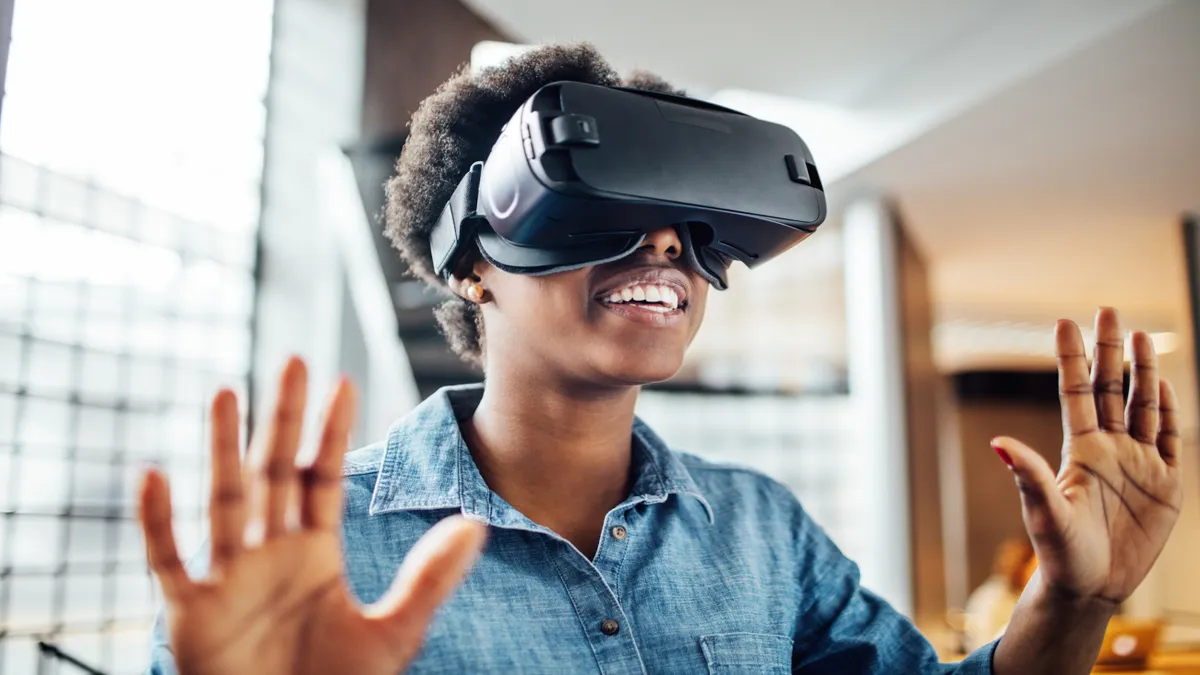Unconscious bias training often focuses on raising awareness, but what’s missing is how employees can take action and change their behavior to promote and support diversity and inclusion.
Based on Lyft’s ground-breaking unconscious bias program, our training at Udemy helps employees understand their biases and how they can take action at work. See The L&D Behavior Change Toolkit, featuring a Lyft case study.
Here’s how we designed our unconscious bias training program at Udemy.
Structure your training to help employees process and internalize new learning
We structured our unconscious bias training to help employees process and internalize what they learn. We framed our learning program using the Revised Bloom’s Taxonomy, a well-known approach in instructional design, to help employees implement behavior change.
Revised Bloom’s Taxonomy reflects the cognitive process students progress through as they learn. It starts with the most basic skills like remembering new information to applying, evaluating, and ultimately creating their own original thinking on the topic. L&D instructors and teachers can incorporate these key levels in their programs to effectively help students apply what they learn.
The different levels in the Revised Bloom’s Taxonomy include:
- Remembering
- Understanding
- Applying
- Analyzing
- Evaluating
- Creating
If you want to influence employee values and attitudes like unconscious bias, you can adapt this taxonomy to help change behavior and attitude. Instead, each level the student progresses through focuses on how individuals might process and internalize new values and attitudes. Here are the levels adapted for value and attitude change:
- Receiving
- Responding
- Valuing
- Organizing
- Internalizing
In this version, learners move through the different levels of receiving information, coming to terms with the new values being introduced in the training (Valuing), resolving different value clashes (Organizing), and the last level where they internalize what they learned and start to build a new value system to guide them (Internalizing).
Based on this adapted version, we designed our unconscious bias training at Udemy with activities for each level.
-
Receiving: Present unconscious bias studies to highlight how people can be inadvertently biased at work.
-
Responding: Include activities and discussion that promote active participation by learners.
-
Valuing: In the case of unconscious bias, it’s about accepting and realizing that bias exists and how individuals can overcome this bias.
-
Organizing: Have employees experience different perspectives and backgrounds through VR films and audio stories. They can then discuss these different stories and how this might have changed their perspective.
-
Internalizing: Finally, end with a discussion where employees suggest ways they can promote inclusion in their organization. This begins to build a new value system that will help guide the learner’s behavior.
How did we incorporate the above Revised Bloom Taxonomy into our program? Here are some examples of the kinds of activities we introduced during the “Organizing” and “Internalizing” phases of our unconscious bias training.
Virtual reality allows people to walk in someone else’s shoes
The brain doesn’t have time to process everything, so it creates “mental shortcuts” that are usually based on preconceived notions or values people already have. These mental shortcuts are often unconscious biases. It’s how the brain operates and is a natural human condition. The reality is we are all biased in some way as our brain finds efficient ways to process the world’s information. However, we can become aware of our mental shortcuts and try to switch off our brains’ autopilot when necessary.
One way to switch off these mental shortcuts is to learn about and understand people who are different from us. In the “Organizing” level of the Revised Bloom’s Taxonomy, part of the learning goal is to bring together different values, resolve clashes among them, and start to build a new value system. In our Udemy unconscious bias training program, we leveraged virtual reality as a way to introduce different values and ways of thinking.
Virtual reality allows employees to immerse themselves in another person’s world to truly empathize and understand their perspective. Leverage virtual reality films to let employees explore perspectives different from their own.
Rent VR headsets and purchase off-the-shelf immersive VR films so your employees can experience these unique perspectives. We used the app Within: Extraordinary Stories in Virtual Reality. In addition to VR films, you can also offer powerful audio stories from StoryCorps: Stories from People of All Backgrounds and Beliefs. For example, a person who is mugged shares an emotional story of how he befriended his mugger and shared a meal together. Although these are not workplace stories, they are compelling stories that allow employees to rethink stereotypes and try to understand a person’s unique background and point of view.
After being immersed in a VR setting and gaining a new perspective, employees can discuss and share their experience with their peers. When employees vocalize their experience, it begins to change the way people think about those that are different from them. In addition, listening to how peers react or act positively to people with different backgrounds encourages employees to model themselves towards more desired behavior.
Action-based learning
For the “Internalizing” step of the Revised Bloom’s Taxonomy, we helped Udemy employees begin to internalize what they learned and incorporate new ways of thinking into their own value system. To help employees internalize unconscious bias, we ended our training with an activity where people were asked to suggest ways they can promote inclusion in their organization. Each employee was asked to commit to implementing one idea to improve inclusiveness.
Calling “in” (vs. calling out) peers and asking them to be inclusive to avoid bias is also a key component of changing behavior on the job and helping employees internalize what they learned. The act of calling people in focuses on this behavior change, it’s not punitive but intended to create a more inclusive environment. The second part of the training can feature a role-playing session where employees can practice pointing out bias in real-life workplace scenarios and effectively calling people in—creating opportunities for repetitive learning.
We also kept learning ongoing after the training by assigning online courses on gender bias and unconscious bias on our Udemy for Business platform. These short online videos offer real-life scenarios where bias creeps in during hiring interviews or meetings and suggest tips on how employees can respond to these situations. All of these elements help employees begin to internalize what they learned and can guide their future behavior.
Lyft case study on unconscious bias training
We built our training based on Lyft’s ground-breaking unconscious bias training program. To see how Lyft designs their unconscious bias training and learn about our L&D new behavior change framework, check out L&D Behavior Change Toolkit: 5 Ways to Change Behavior at Work, featuring a Lyft case study.
Shelley Osborne is Head of Learning & Development at Udemy. She has 14 years of experience in the education sector and corporate learning and development. Previously, she was VP of Learning & Development at Farside HR Solutions, specializing in talent leadership, management training, and soft skills development in the startup space in the San Francisco Bay Area. She has a Master’s degree in Education from the University of Calgary where she specialized in gamification and instructional leadership.
Udemy for Business is a learning platform that helps companies stay competitive in today’s rapidly changing workplace by offering fresh, relevant on-demand learning content, curated from the Udemy marketplace. Our mission is to help employees do whatever comes next--whether that’s the next project to do, skill to learn, or role to master. We’d love to partner with you on your employee development needs. Get in touch with us at [email protected]










